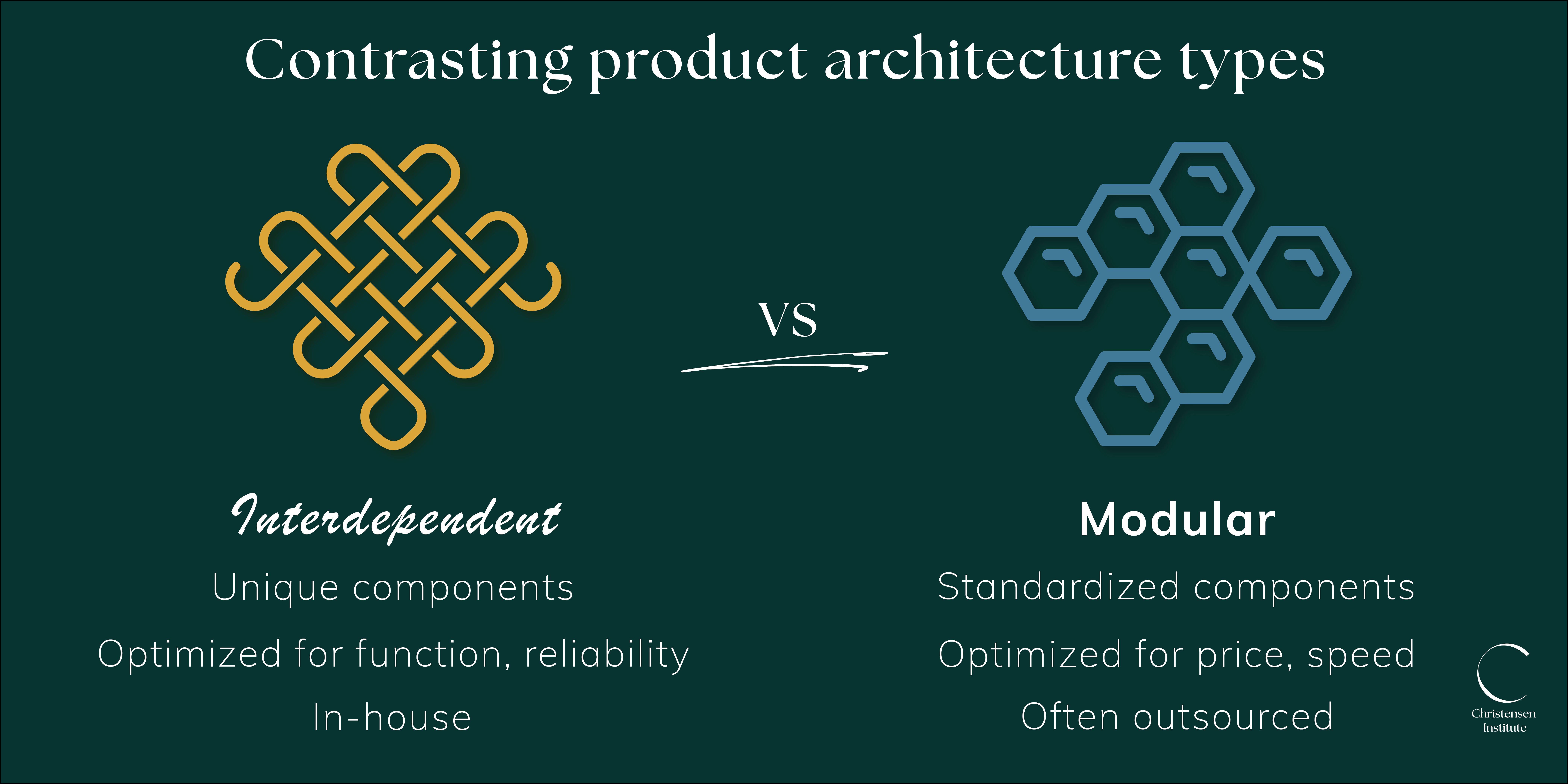Contrasting Product Architecture Types
Modularity Theory (or the Theory of Interdependence and Modularity) explains how different parts of a system’s architecture relate to one another and consequently affect the development and adoption of that system.
According to the theory, a system’s architecture determines its components and systems and defines how they must interact—fit and work together—to achieve desired outcomes.
Interdependence
The place where any two subsystems fit together is called an interface. A system’s architecture is interdependent at an interface if one part can’t be created independently of the other. In other words, how one is designed and made depends on how the other is designed and made.
Modularity
In contrast, a modular interface has no unpredictable interdependencies between subsystems, people, teams, or organizations. Modular components and subsystems fit and work together in well-understood and highly-defined ways. In other words, to the extent that interfaces are specifiable, verifiable, and predictable, they are modular in nature.


